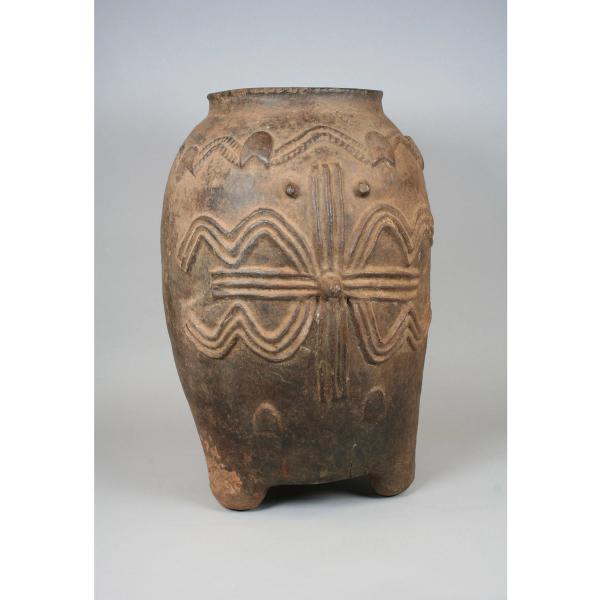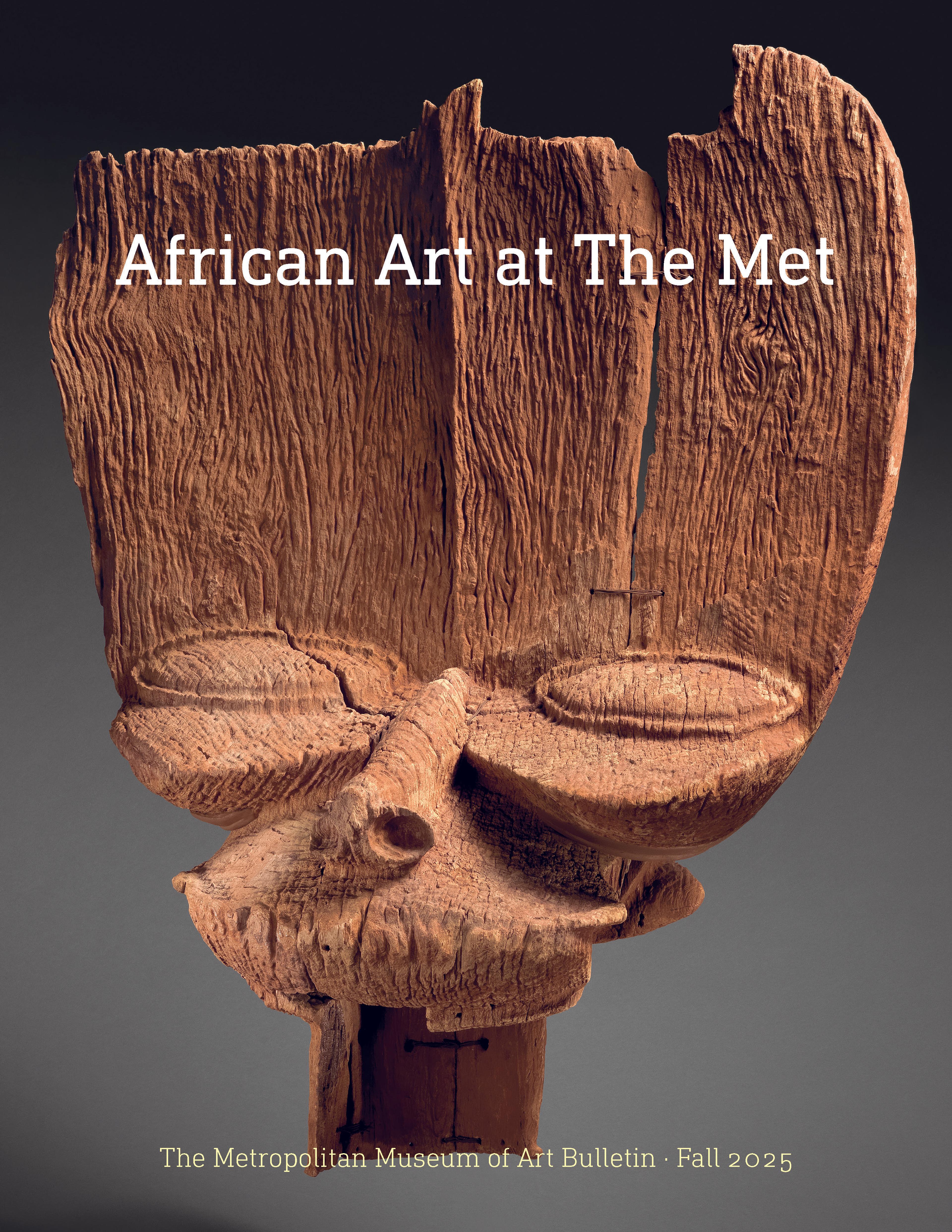Vessel
Artwork Details
- Title: Vessel
- Artist: Kurumba artist
- Date: 19th–20th century
- Geography: Burkina Faso
- Culture: Kurumba peoples
- Medium: Terracotta
- Dimensions: H. 25 × Diam. 17 in. (63.5 × 43.2 cm)
- Classification: Ceramics-Containers
- Credit Line: Gift of Dr. and Mrs. Karl G. Klinges, 1994
- Object Number: 1994.301
- Curatorial Department: The Michael C. Rockefeller Wing
Audio

1541. Vessel, Kurumba artist
Magdalene Odundo
MAGDALENE ODUNDO: It has such a global feel to it. It cannot be mistaken as anything other than a pot or a vessel, but it's a very sculptural piece of work as well. It's expansive in its reach in terms of appeal, but it has a very specific surface decoration that can pinpoint its location at the same time.
ANGELIQUE KIDJO (NARRATOR): This vessel would have been used for storing life-sustaining grain. Both its practical function and rounded forms celebrate fertility. Here is Dame Magdalene Odundo, a premier ceramic artist born in Kenya.
MAGDALENE ODUNDO: Some of those nodules that appear there—they’re a bit like scarification on the belly of a woman. The markings remind me very much of markings that my mother had, because we had the tradition within our community of such scarifications when a woman reached puberty, and the decoration on the body would be added as they got married and had their children.
I find a woman’s ability to carry life embodies the qualities of a pot that contains life and sustains in all sorts of manners. The inside has this capacity to contain. The exterior tells us what is happening or gives us what to expect. But the preciousness of the interior is what is so, so important.
ANGELIQUE KIDJO: The clay medium uniquely gives shape to human history.
MAGDALENE ODUNDO: I think of all the arts, ceramics is one of the most human and natural, and has existed throughout the history of mankind. I think pots were the first invention when fire was discovered. So the molding of clay breathed life into our humanity, and it is the most human material there is. I don't think there's any other material that has the capacity to tell the story of humankind as simply as clay itself.
More Artwork
Research Resources
The Met provides unparalleled resources for research and welcomes an international community of students and scholars. The Met's Open Access API is where creators and researchers can connect to the The Met collection. Open Access data and public domain images are available for unrestricted commercial and noncommercial use without permission or fee.
To request images under copyright and other restrictions, please use this Image Request form.
Feedback
We continue to research and examine historical and cultural context for objects in The Met collection. If you have comments or questions about this object record, please contact us using the form below. The Museum looks forward to receiving your comments.
